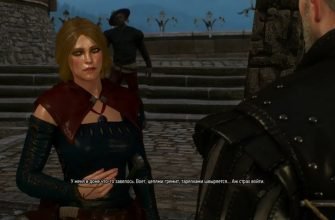The Witcher 3: Wild Hunt continues to captivate players with its richly detailed world, intricate quests, and the moral choices players must navigate. One such quest is “Cabaret,” where players assist the bard Dandelion in transforming the Rosemary & Thyme into a grand establishment. This quest interlinks a variety of tasks and culminates in a significant aesthetic choice: whether to decorate the venue in a ‘Boudoir’ or ‘Theater’ style. This decision may seem cosmetic, but it serves as a reflection of the narrative’s depth and the way player decisions can shape the gaming experience.
Understanding the Quest: Cabaret
The “Cabaret” quest is an essential side quest in Novigrad that becomes available after completing “A Poet Under Pressure.” It dives into the world of theater and aesthetics, exploring the dual themes of identity and transformation. As Geralt, players partner with the charismatic yet hapless Dandelion, who is eager to reinvent his venue to better fit his vision. This quest offers a blend of creative problem-solving, interpersonal diplomacy, and, ultimately, a decision on which decor direction aligns with the desired ambiance.
Initiating the Cabaret Quest
To start this quest, players must head to the Rosemary & Thyme, where an argument between Dandelion and Priscilla sets things in motion. Dandelion has grand plans to evolve the establishment into a premier cabaret. However, turning this vision into reality will require acquiring several key items and convincing vital individuals to lend their assistance. The first task requires obtaining a prop sword from Madame Irina, a character encountered in the quest “The Play’s The Thing.” This task includes infiltrating theater backstage politics and convincing influential characters like the choreographer’s husband. Each step involves negotiation tactics and gathering resources, culminating in a choice that significantly affects the atmosphere of the Rosemary & Thyme.
Key Tasks and Choices
- Acquiring the Prop Sword: Players must retrieve a sword from Madame Irina, a recognizable figure from previous quests. This interaction underscores the interconnected social network within Novigrad’s artistic scene, providing players with additional lore and character development.
- Dandelion’s Con: In a playful twist, players engage in a staged robbery designed to charm a lady financier. This humorous task involves a choice of dialogue and action, reflecting the player’s preferred style of persuasion and roleplay.
- Placards Incident: Perhaps the most dynamic section involves finding Rautlec, the placard maker. Players face a moral dilemma: win a race for Rautlec, pay his debts, or ignore his plight altogether. Each choice impacts the delivery of Dandelion’s advertising assets, highlighting the balance between Geralt’s finances and ethical compass.
The Final Decision: Boudoir vs Theater Decor
After successfully navigating the various tasks, players must make a pivotal decision that impacts the aesthetic of the rebranded Rosemary & Thyme. Will it be the Boudoir or the Theater? Each choice carries thematic significance, affecting not only the visual experience but also the storytelling aspect embedded within the game world.
Boudoir Decor
- Aesthetic Theme: The Boudoir style is intimate and lush, emphasizing luxury and sensuality with plush furnishings and rich ornamentation. It reflects a more personal and perhaps romantic identity for the cabaret, aligning with the personal and intimate performances Dandelion desires.
- Narrative Implications: Opting for the Boudoir represents a push for the glamorous and intimate nature inherent in many of Novigrad’s elite circles. It signals a preference for opulence over theatricality, aligning with Dandelion’s love for personal charisma and charm.
Theater Decor
- Aesthetic Theme: The Theater option embraces grandeur and spectacle, focusing on dramatic stages, vibrant drapery, and a general sense of the dramatic flair. It is an homage to classic theatrical traditions, cementing the cabaret as a cultural hotspot.
- Narrative Implications: Choosing the Theater decor underscores a dedication to art and performance, encouraging a variety of shows and plays. It signifies a blend of community and entertainment, patterning after the bustling theatrical scene of Novigrad.
Impact on Gameplay and Story
The choice between Boudoir and Theater does not alter the main storyline significantly but contributes to the personalization and emotional connection a player fosters within the game. By allowing players to influence the game world in even small ways, The Witcher 3 reinforces a sense of agency and consequence. Different dialogues occur post-revamp depending on the aesthetic chosen, with additional comments from characters like Priscilla and Dandelion that add flavor and depth to their personalities.
Strategies and Considerations
When making this decision, players should consider their preferences in the tone and atmosphere they wish to cultivate in Novigrad. If players prefer a more personal, romance-oriented environment, then the Boudoir is an excellent choice. Conversely, if they value tradition and artistic expression, the Theater decor may be the better option. Players should also think about their interactions with Dandelion and Priscilla, considering how these relationships may evolve based on the aesthetic path chosen.
Conclusion
The “Cabaret” quest in The Witcher 3: Wild Hunt is much more than a simple sequence of tasks. It serves as a microcosm of the broader themes of identity, authenticity, and choice that permeate the game. By choosing between the Boudoir and Theater decor, players contribute uniquely to the world of The Witcher, allowing each playthrough to resonate personally. Whether drawn to the intimate allure of the Boudoir or the grand spectacle of the Theater, players leave a distinctive mark on Novigrad’s cultural tapestry, reflecting the intricate interplay of choice and consequence that defines The Witcher’s narrative experience.









